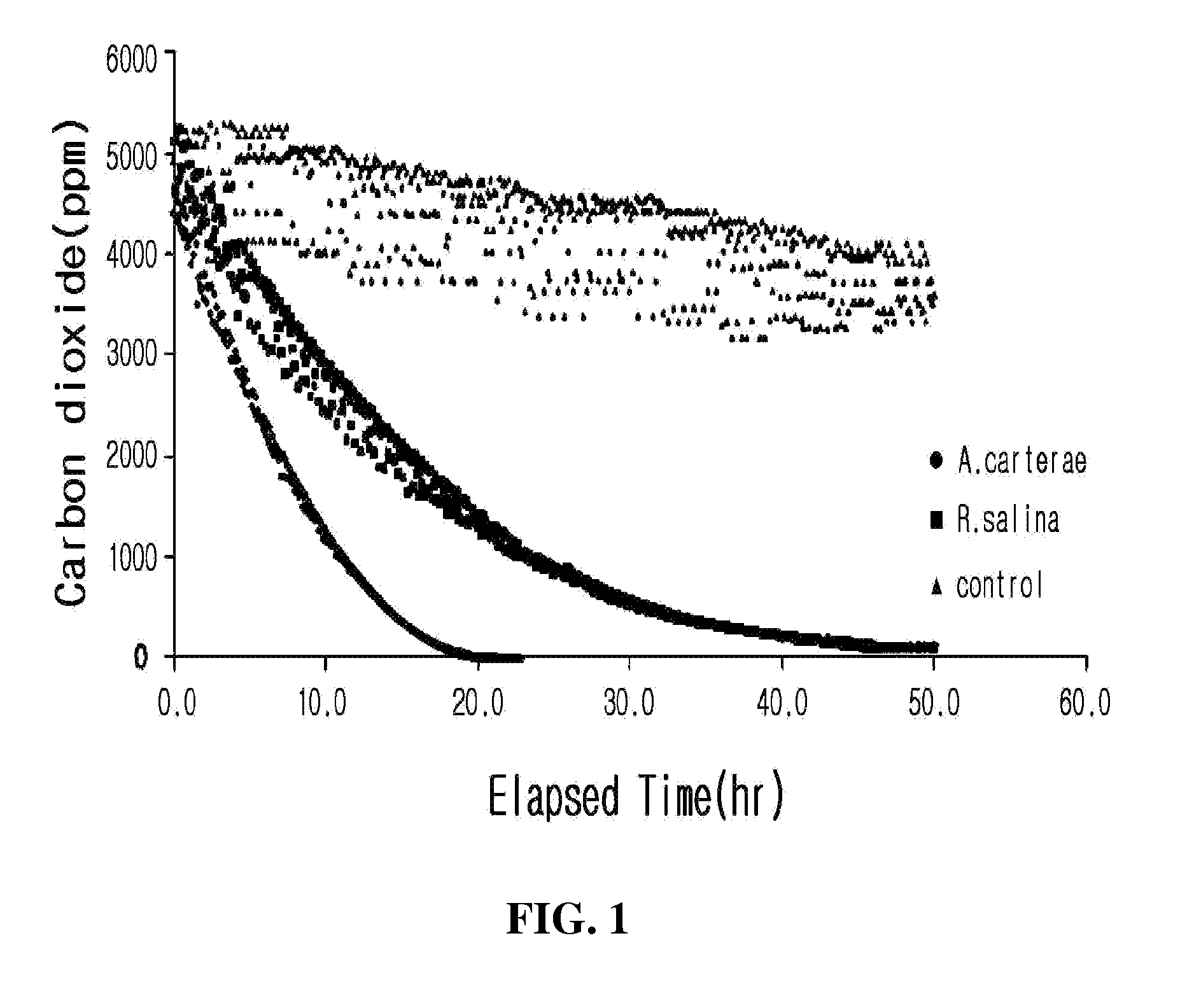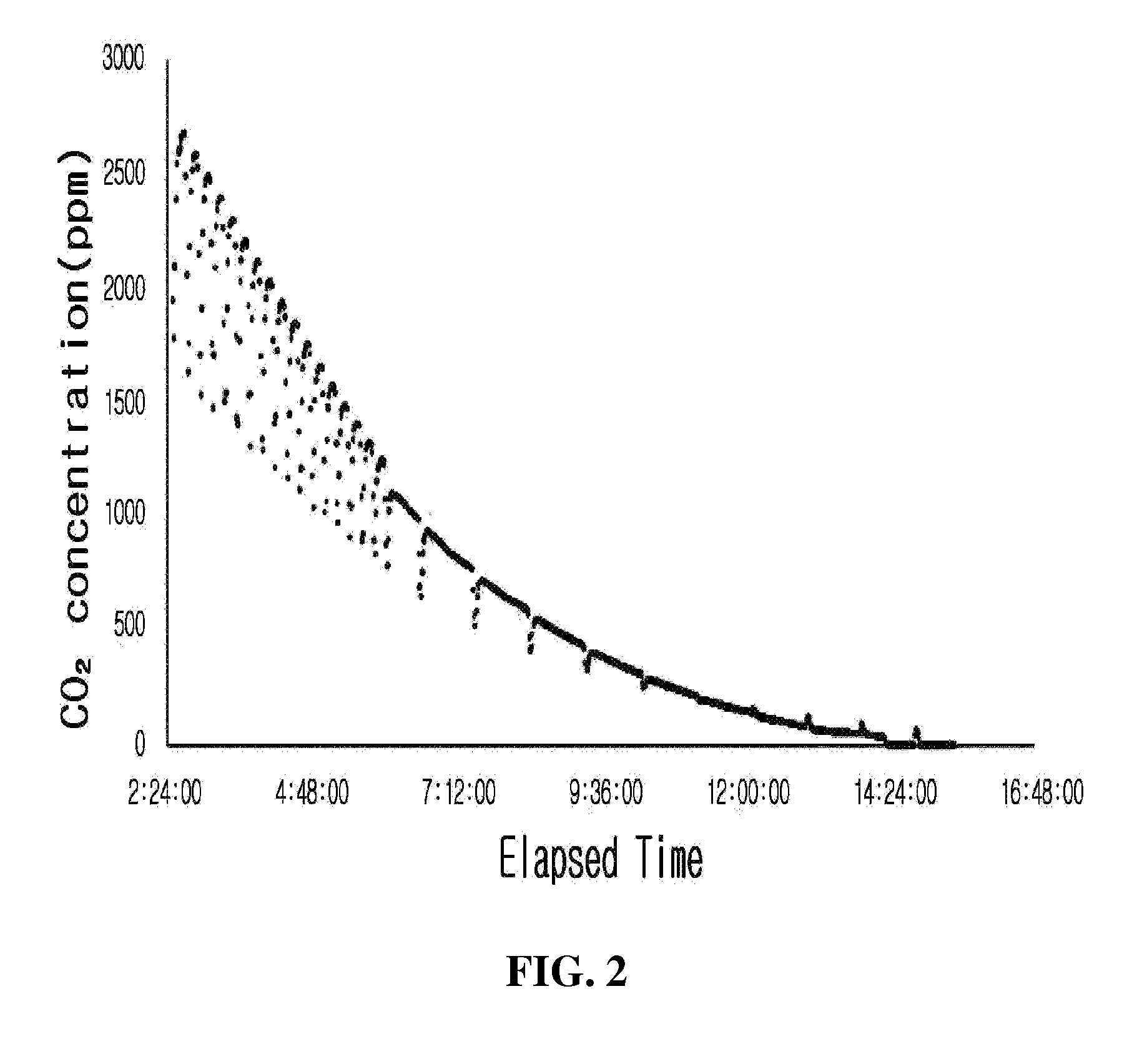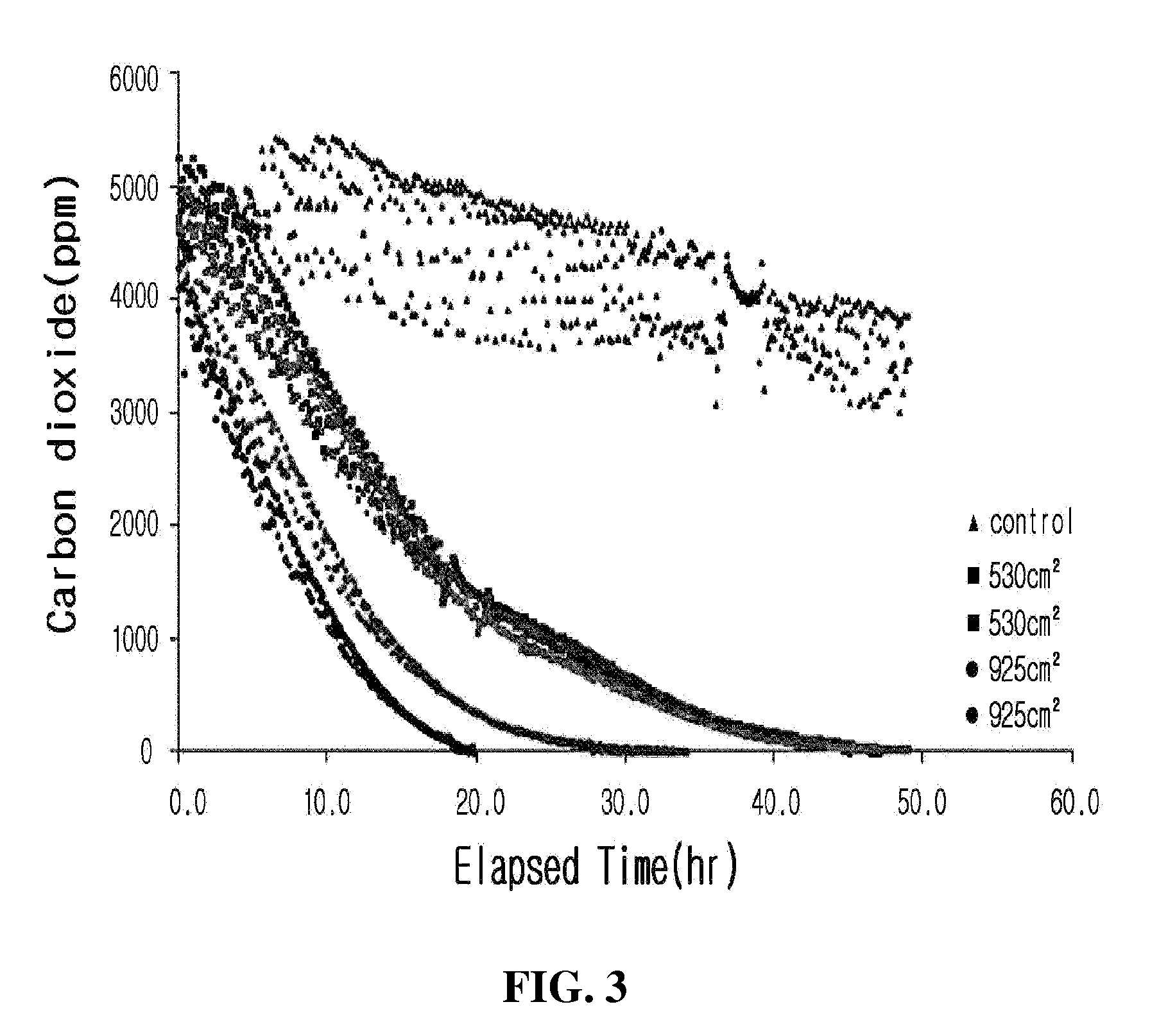Conversion to bioenergy from biomass of protistan grazers feeding on aquatic plant and/or algae which can survive and uptake greenhouse gases in the mixture of toxic gases and substance
a technology of protistan grazers and biomass, which is applied in the direction of biofuels, microorganisms, disinfection, etc., can solve the problems of difficult to establish the design and operation conditions of the reactor for fixing carbon dioxide emitted by the industry, difficulty in obtaining bioenergy, etc., to achieve effective and economical bioenergy, good effect of cultivation, and easy harvesting of predators
- Summary
- Abstract
- Description
- Claims
- Application Information
AI Technical Summary
Benefits of technology
Problems solved by technology
Method used
Image
Examples
example 1
Absorption of Greenhouse Gases by Aquatic Plant and / or Algae
[0064]1) Selection of Optimum Aquatic Plant and / or Algae
[0065]To select aquatic plant and / or algae that are resistant to toxic substances in a waste gas mixture, that is, may survive, but may not die, in the presence of toxic substances, and have a high adsorption rate of greenhouse gases such as carbon dioxide and the like, aquatic plant and / or algae were cultivated while being supplied with a culture solution oversaturated with a waste gas mixture (combustion gas) generated during burning of fossil fuels including coal, petroleum (gasoline and diesel), and natural gas (LNG) dissolved therein through aeration. Then, species of aquatic plant and / or algae that may survive in the presence of the culture solution oversaturated with dissolved combustion gas were selected.
[0066]Dinoflagellatae including Amphidinium carterae, Prorocentrum minimum and Heterocapsa triquetra, flagellatae including Heterosigma akashiwo and Rhodomonas...
example 2
Selection of Predators and Increase in Population of Predators
[0079]1) Selection of Predators Suitable for Selected Aquatic Plant and / or Algae
[0080]To select predators of the selected aquatic plant and / or algae, Amphidinium carterae, field samples were gathered each season in 23 coastal vertex across the country (Incheon, Sihwa, Pyeongtaek, Seosan, Daecheon, Gunsan, Gyeokpo, Mokpo, Goheung, Gwangyang, Yeosu, Jinhae, Masan, Tongyeong, Busan, Ulsan, Pohang, Uljin, Samcheok, Donghae, Jumunjin, Sokcho). The samples were filtered through a Nitex screen of 154 μm mesh. The samples were cultivated, feeding on Amphidinium carterae of 8,000 cells / ml concentration, while being rotated at 0.9 rpm in a rotating wheel. In this instance, culture temperature was 20° C., and illuminance was 1200 Lux. After 2 days passed, each sample was observed with a microscope, and predators grown on Amphidinium carterae were isolated. The obtained predators were flagellatea including Oblea rotunda, Oxyrrhis mar...
example 3
Harvest of Predators
[0085]To improve the harvesting efficiency of Oxyrrhis marina in this experiment, a continuous centrifugal separator was driven at 5000 rpm in the lab. The harvested Oxyrrhis marina was light pink. The harvested biomasses were freeze-dried and used in an experiment for bioenergy production.
[0086]Although this embodiment shows a centrifugal separator was used in consideration of harvesting efficiency and basic experimental materials, a porous filter net or a glass fiber filter paper of a low cost may be used in an actual system.
[0087]1 ton of Oxyrrhis marina was putted into a 3 ton-scale tank at a concentration of 600 cells / ml, and cultivated for 3 days (when 330 L a day is supplied, about 1 ton is produced in 3 days) while being supplied with Amphidinium carterae of 7,000 cells / ml as preys. When one Oxyrrhis marina feeds on 20 to 25 Amphidinium carterae a day and is divided 5 times for 3 days, Oxyrrhis marina of 30,000 cells / ml was produced to 2 tons in 3 days. T...
PUM
| Property | Measurement | Unit |
|---|---|---|
| size | aaaaa | aaaaa |
| temperature | aaaaa | aaaaa |
| temperature | aaaaa | aaaaa |
Abstract
Description
Claims
Application Information
 Login to view more
Login to view more - R&D Engineer
- R&D Manager
- IP Professional
- Industry Leading Data Capabilities
- Powerful AI technology
- Patent DNA Extraction
Browse by: Latest US Patents, China's latest patents, Technical Efficacy Thesaurus, Application Domain, Technology Topic.
© 2024 PatSnap. All rights reserved.Legal|Privacy policy|Modern Slavery Act Transparency Statement|Sitemap



